Author: Jake Huolihan
Known for having higher diastatic power than malts made of standard 2-row barley, 6-row barley malt was the primary grain used by early American brewers due largely to its agronomic traits and hence availability. In fact, based on my review of brewing history, it would seem the reliance on 6-row barley in brewing is uniquely American, as countries such as Germany and England were sold on 2-row malts. Coincidentally, American brewers at the time were using relatively high percentages of non-diastatic adjuncts, so the use of 6-row malt worked in their favor, providing the enzymatic power required to convert the starches from corn and rice into fermentable sugar.
It wasn’t until the latter half of the 20th century that American brewers began adopting 2-row barley malt for use in beer production, motivated perhaps by its international prominence as well as its higher carbohydrate and lower protein levels. While 6-row malt is used by Big Beer to this day to produce their notably flavor-neutral Pilsners, craft brewers rely almost exclusively on 2-row malt, which they claim contributes a fuller malt flavor compared to the graininess imparted by 6-row malt.
Curious about the numbers? When looking at a barley stalk from the top down, 2-row varieties appear to have 2 rows of barley kernals while 6-row varieties appear to have 6 rows. The number is a literal reference to the arrangement of the kernels on the barley stalk.
In researching 2-row and 6-row malts, I discovered there was a paucity of informational sensory data, but rather a bunch of anecdotal and non-comparative evaluations. Having never brewed with 6-row malt before, I was curious if what I’d read was true and designed an xBmt to test it out!
| PURPOSE |
To evaluate the differences between beers produced with either 2-row or 6-row pale malt.
| METHODS |
Given the nature of the xBmt, I thought it fitting that each beer be made with 100% of either base malt.
Sechsyduo
Recipe Details
| Batch Size | Boil Time | IBU | SRM | Est. OG | Est. FG | ABV |
|---|---|---|---|---|---|---|
| 6 gal | 60 min | 18.2 IBUs | 3.4 SRM | 1.042 | 1.010 | 4.2 % |
| Actuals | 1.042 | 1.01 | 4.2 % | |||
Fermentables
| Name | Amount | % |
|---|---|---|
| Rahr 2-Row OR Rahr 6-Row Pale Malt | 11 lbs | 100 |
Hops
| Name | Amount | Time | Use | Form | Alpha % |
|---|---|---|---|---|---|
| Hallertau Magnum | 5 g | 60 min | Boil | Pellet | 11.5 |
| Pekko | 8 g | 30 min | Boil | Pellet | 15 |
Yeast
| Name | Lab | Attenuation | Temperature |
|---|---|---|---|
| Harvest (L17) | Imperial Yeast | 72% | 50°F - 60°F |
Notes
| Water Profile: Ca 81 | Mg 2 | Na 46 | SO4 74 | Cl 81 |
Download
| Download this recipe's BeerXML file |
I prepared a single large starter of Imperial Yeast L17 Harvest a few days ahead of time.
The night before brewing I collected the full volume of water for each batch and adjusted both to the same target profile. I then weighed out identical amounts of each malt, which looked the same to my eyes.
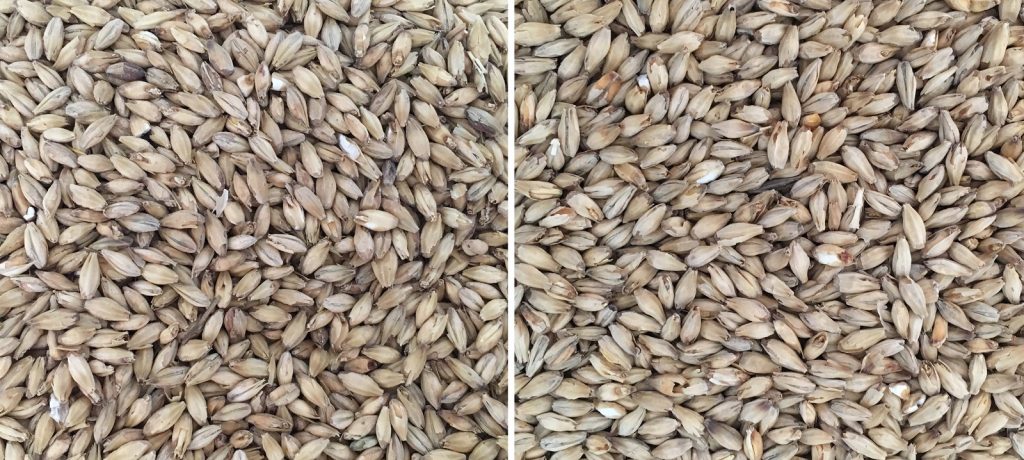
Each set of grain was milled in preparation for the following day’s brew.
I awoke the next morning and immediately turned on the elements to begin heating one batch of water. Since this brew day required separate mashes, I staggered the start of the second batch by 20 minutes. Once the water was slightly warmer than my target strike temperature, I transferred the liquor to my mash tun for a brief preheat before mashing in and checking to ensure both hit the same mash temperature.
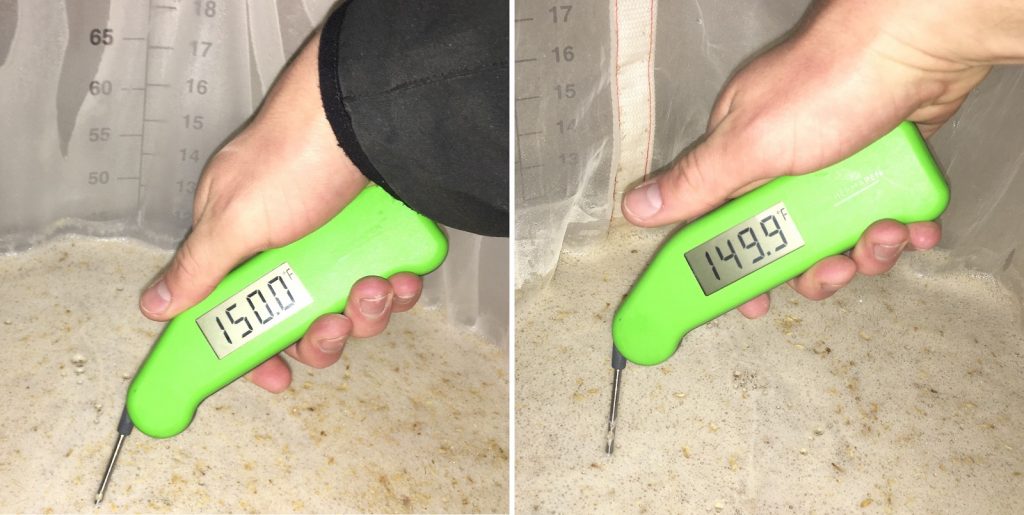
About 15 minutes into each mash, I pulled samples for pH readings and found they were right in line with Bru’n Water predictions.
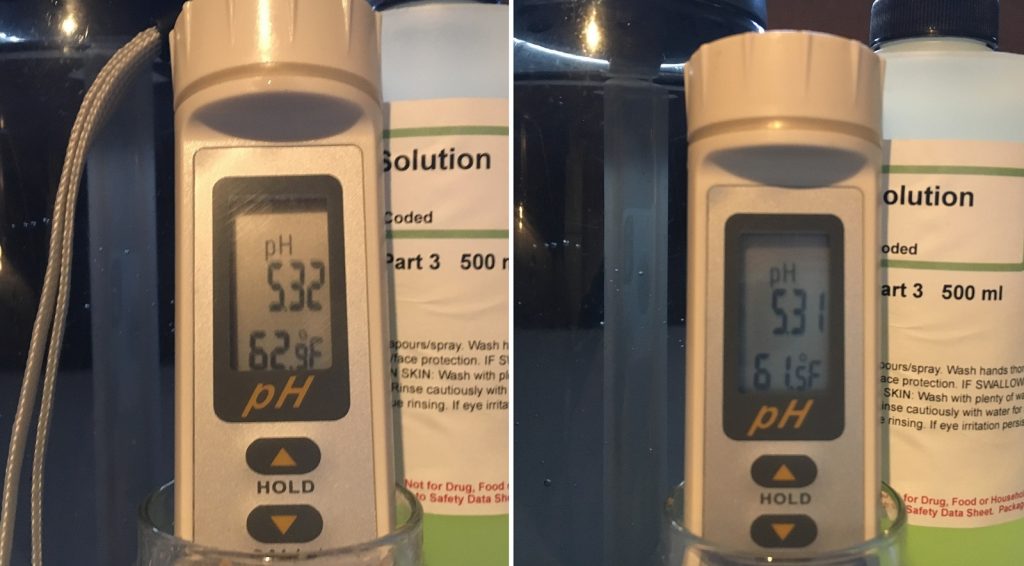
The mashes were left to rest for 60 minutes.
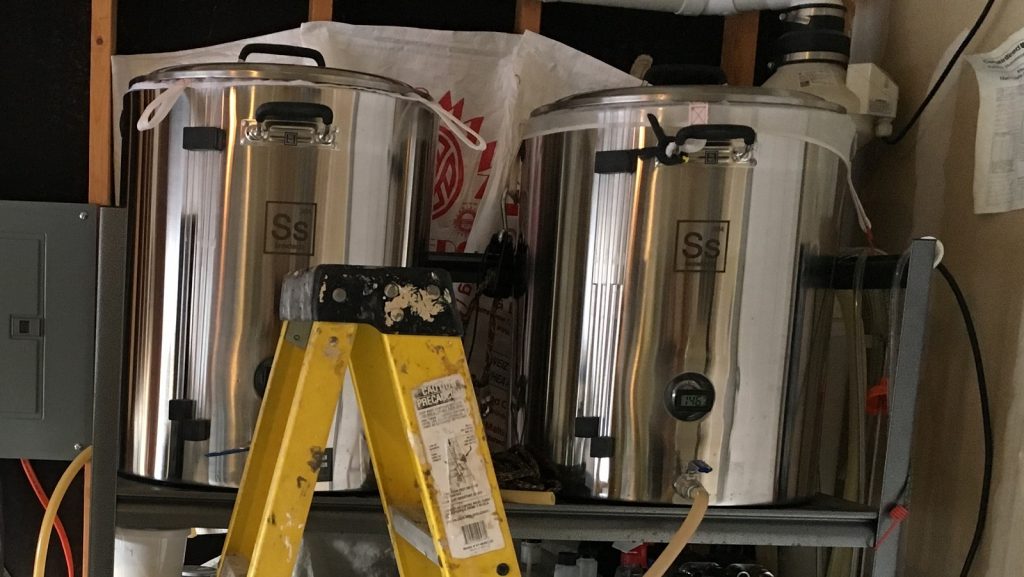
At the conclusion of each mash, I collected the sweet wort separate kettles an began heating them up. Both worts were boiled for 60 minutes with hops added at the times stated in the recipe.
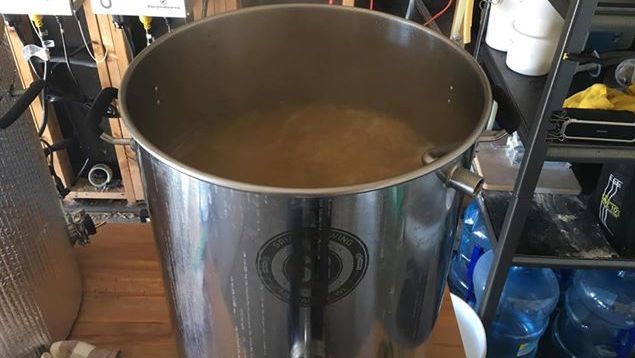
The worts were quickly chilled as soon as they were done boiling.
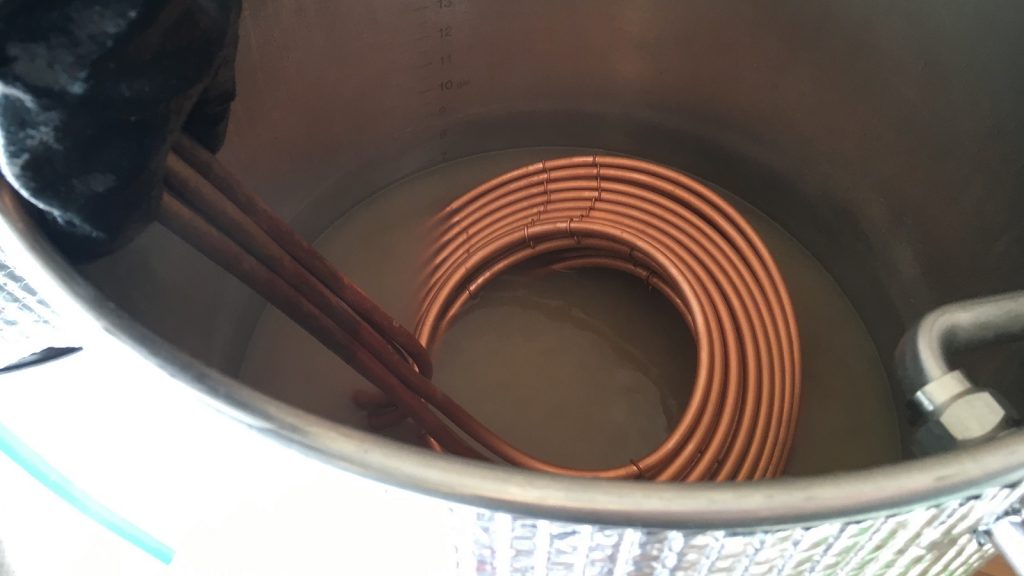
Hydrometer measurements showed the 2-row wort had an ever so slightly higher OG than the 6-row wort, and to my eyes, the 6-row wort seemed a hair darker.
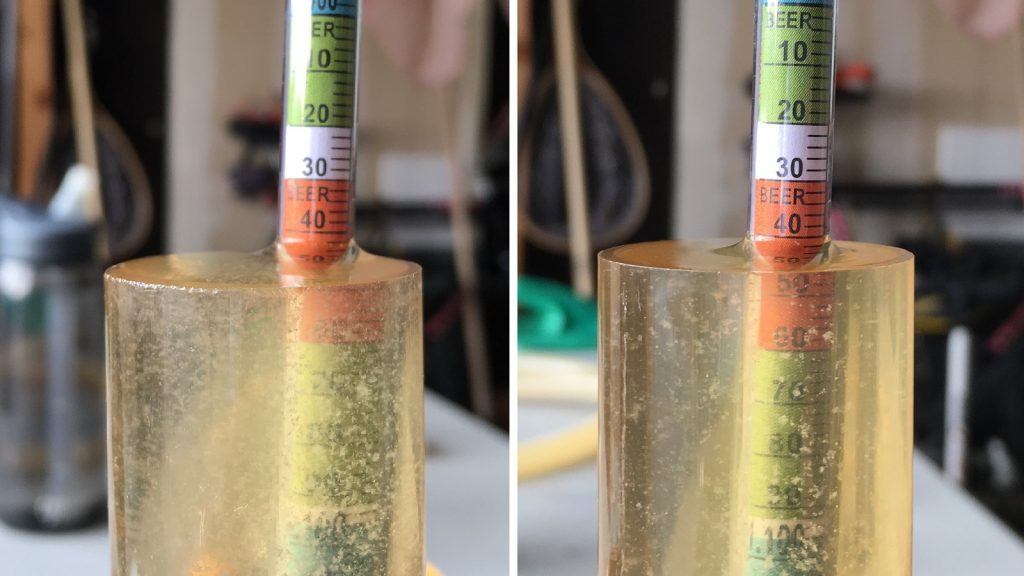
Equal amounts of wort were racked to separate Brew Buckets and placed in my chamber where they were left to finishing chilling to my desired fermentation temperature.
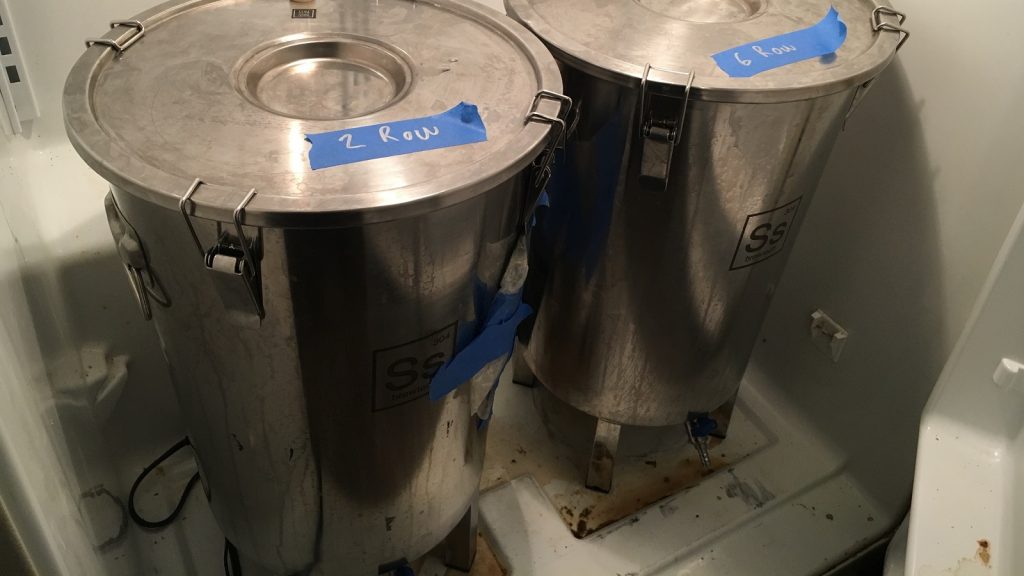
When the worts stabilized at 50°F/10°C, I evenly split the decanted starter between them before dosing each with 90 seconds of pure oxygen. Fermentation was kicking within 18 hours and proceeded similarly in both beers. I stole a first set of hydrometer samples a week after pitching then a second set 3 days later that were the same, indicating the beers were done fermenting.
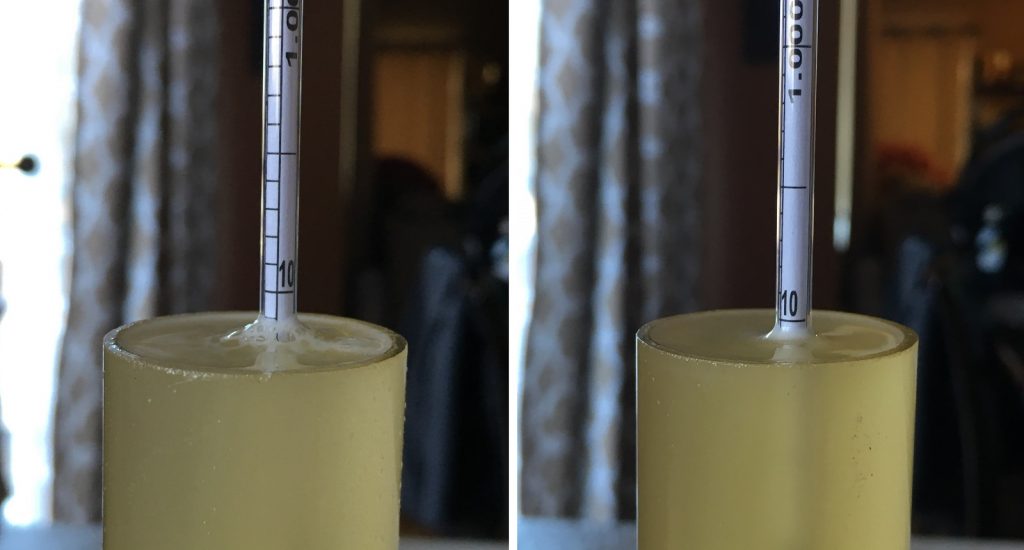
Skipping my typical gelatin fining process, I installed a Clear Beer Draught System in each keg then proceeded with kegging the beers.
The filled kegs were placed in my cool keezer on gas and allowed to lager for a month before I served them to unsuspecting participants.

| RESULTS |
A total of 20 people of varying levels of experience participated in this xBmt. Each participant was served 1 sample of the beer made with 2-row pale malt and 2 samples of the beer made with 6-row pale malt in different colored opaque cups then asked to identify the unique sample. At this sample size, 11 tasters (p<0.05) would have had to identify the unique sample in order to reach statistical significance, though a total of 12 (p=0.01) made the accurate selection. These results indicate participants in this xBmt were able to reliably distinguish a beer made with 2-row pale malt from one made entirely of 6-row pale malt.
The 12 participants who made the accurate selection on the triangle test were instructed to complete a brief preference survey comparing only the beers that were different. Preference was split right down the middle with both the 2-row and 6-row beers garnering the preference of 4 tasters each. Another 3 tasters reported having no preference despite noticing a difference while 1 person said they perceived no difference between the beers.
My Impressions: I was consistently and confidently able to identify the odd-beer-out over a series of semi-blind triangle tests. To my biased palate, the beer made with 2-row was very flavorful with a rich malty sweetness while the 6-row beer had what I perceived as an almost dirty character, it wasn’t bad per se, just not quite as clean and flavorful as the 2-row beer. I didn’t have any problems drinking either beer, both were quite good, but I definitely preferred the beer made with 2-row.
| DISCUSSION |
Base grain provides the canvas upon which the unique character of a beer is built, and though it may rarely take center stage, it’s role is absolutely necessary. While American brewers historically relied on malts made from 6-row barley, most modern breweries these days are using 2-row variants for both its higher extract potential as well as the belief it imparts a fuller malt character to beer. However, there are those who have claimed 2-row and 6-row malts are largely interchangeable and produce no real flavor differences, an assertion contradicted by the fact tasters in this xBmt were capable of distinguishing beers made entirely of either malt.
In addition to tasters being able to reliably tell the beers apart, there were also some objectively observable differences that aligned with expectations. Not only did the 2-row beer have a slightly higher OG, ostensibly as a function of its higher extract potential, but it was also a bit paler in color than its 6-row counterpart.
Participants aren’t asked to describe what it is they perceived as being different, so there’s really no way of knowing for sure, but to my palate the 2-row beer had a fuller malt character I’ve come to expect whereas the beer made with 6-row malt was lacking a bit. Either way, the fact an equal number of tasters chose either sample as their favorite supports the notion that preference is subjective. As for me, while I did enjoy the 6-row beer just fine, I’ll be sticking with 2-row malts in my brewing.
If you have any thoughts about this xBmt, please do not hesitate to share in the comments section below!
Support Brülosophy In Style!
All designs are available in various colors and sizes on Amazon!
Follow Brülosophy on:
FACEBOOK | TWITTER | INSTAGRAM
If you enjoy this stuff and feel compelled to support Brulosophy.com, please check out the Support page for details on how you can very easily do so. Thanks!

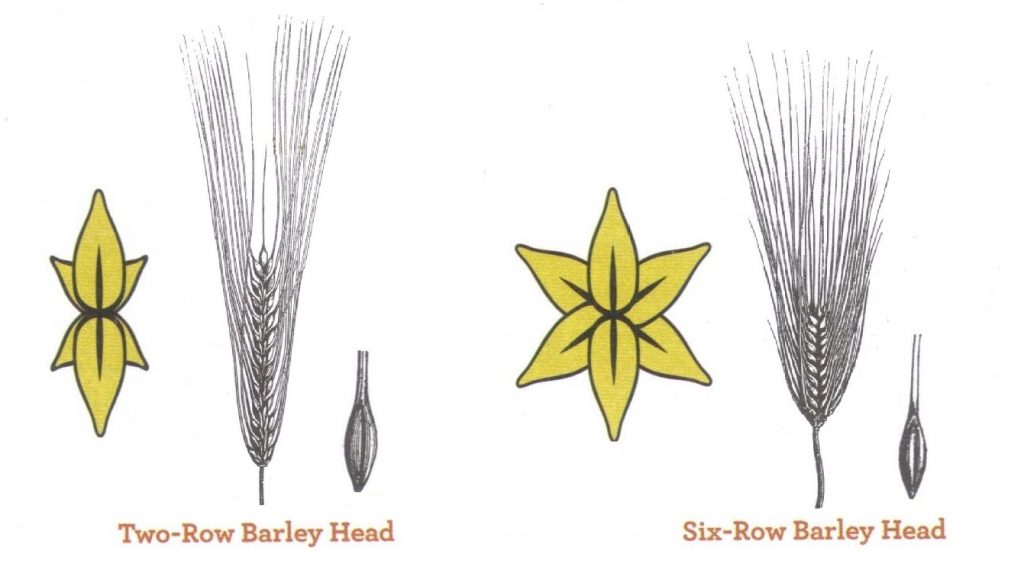

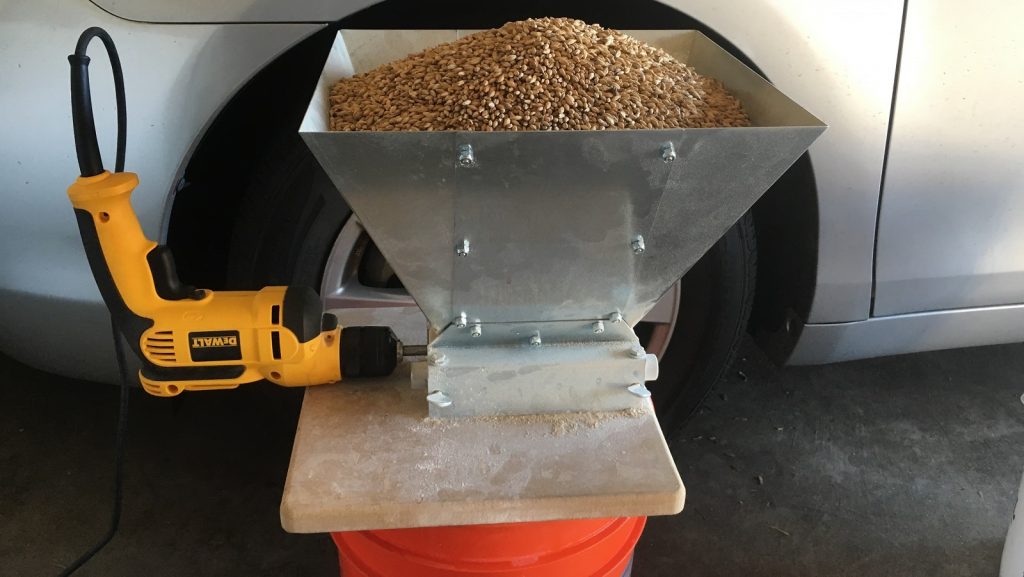
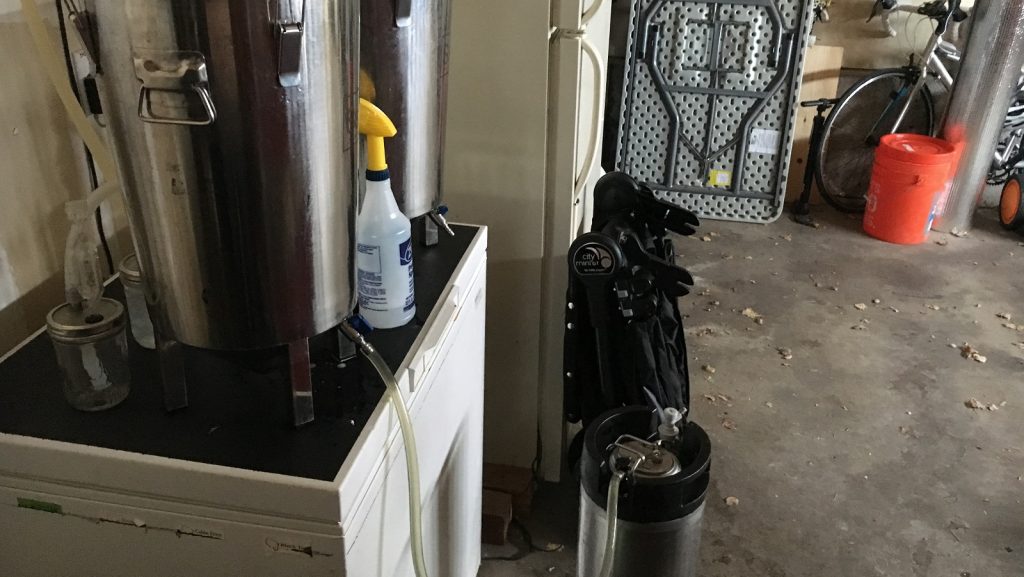










20 thoughts on “exBEERiment | Grain Comparison: 2-Row Pale Malt vs. 6-Row Pale Malt In An American Lager”
Really interesting. Thanks for this. It might be interesting to do a similar experiment but with high adjunct amounts
That was my first thought as well.the Brewers who claim the two grains are interchangeable are generally brewing with high adjunct content, so that may make a difference.
I’ve been curious about this myself, nice write-up. Now of course, for me the obvious follow up is: Do modern two-row malts still lack the enzymatic punch to convert a beer with a very high percentage of adjuncts. Would love to see an experiment comparing both varieties in conjunction with a high percentage of mixed adjuncts.
Anyway, nice job Jake
Cheers thanks for reading!
Interesting… Good experiment.
Very interesting comparison. I wonder if the Big Breweries use 6-row because a farmer can produce more grain per acre than they can with 2-row ( may be wrong on that because I’m not a farmer…) Also, most people that drink Big Beer don’t really know the difference in flavor between the two because they don’t care….
Were the two malts kilned the same way? Ideally they should be treated identically from harvest to avoid confounding variables, but that’s obviously difficult to achieve.
Interesting to hear you have a clear preference, but the other drinkers were split 50:50.
I have no way of knowing if Rahr malts the two row and six row differently, based on how they looked i’d guess they’re treated similarly.
I have a clear, sighted, biased as heck preference yes haha. Tasters being blind to the variable did not, which is probably more insightful than my thoughts.
“dirty character”? Does that mean that the 6-row example tasted like dirt? If the 2-row was flavorful and malty sweet was the 6-row example lacking that?
Tough to explain honestly, and i struggled to come up with a great descriptor. It did not taste like dirt though, more like lacking in a full malty sweetness compared to the two row, with like a dusty flavor. Having left over six row i munched on some kernels and the flavor i got off of that was pretty much how the beer tasted, so i’d recommend next time you’re at your LHBS to chew on some two row and six row, the unique flavor differences really seemed to carry through to me here.
British brewers used quite a lot of US barley before WW2 as not enough barley was grown in Britain. They also imported from Belgium, Turkey, Canada, parts of Africa, etc. Same with hops. Some of the barley used in British beers was six row and bought on purpose.
Good example with US malt and German hops (how have things changed, eh):
http://barclayperkins.blogspot.co.uk/2015/10/lets-brew-wednesday-1909-barclay.html
I really enjoy 6-row. I almost prefer it to 2-row. I think 6 has a grassier taste which pairs nicely with piney hops. I’m not sure if its by bias, but I feel I get less stuck mashes with 6 than with 2.
They both have their place.
An expbeeriment on that clear draught system would be super interesting.
Thank you guys for all the work you do! I’m just getting into brewing (2 batches in so far) and this site has really helped guide me on areas to focus on and ones that don’t seem to have as big an effect. You’ve also got me starting to think about some experiments I’d like to run on my own to test out how different variables and recipes might be affected. Thanks again!
I’m making a Kentucky Common this weekend for the Derby. I’m going old school and using 6 Row with about 35% corn. Adding some Briess Caramel and Briess Black Malt as well but the bulk of the bill is the 6 malt and corn. Hopefully I don’t regret not going with the 2 Row.
Is there a possibility that the six row malt was merely old? I bought some six row malt for a classic American pilsner from a homebrew shop that turned out to be like two years old because most homebrewers won’t buy six row.
I was going to say that 6 row malt needs step mashing, but I just learned that virtually all moderm 6-row is modified, at least in North America. Rahr Pale 2-row is supposed to be a little more British(malty) in character, but your observations would indicate that may not be true for the 6 row?
What are your thoughts on the Clear Beer Draught system?
Are you taking your readings from the top of the meniscus? Everything I read says you are supposed to read at the bottom.
Thoroughly enjoyed reading this. Thank you for sharing your experiment with us. Now I know that much more with the difference of the two.